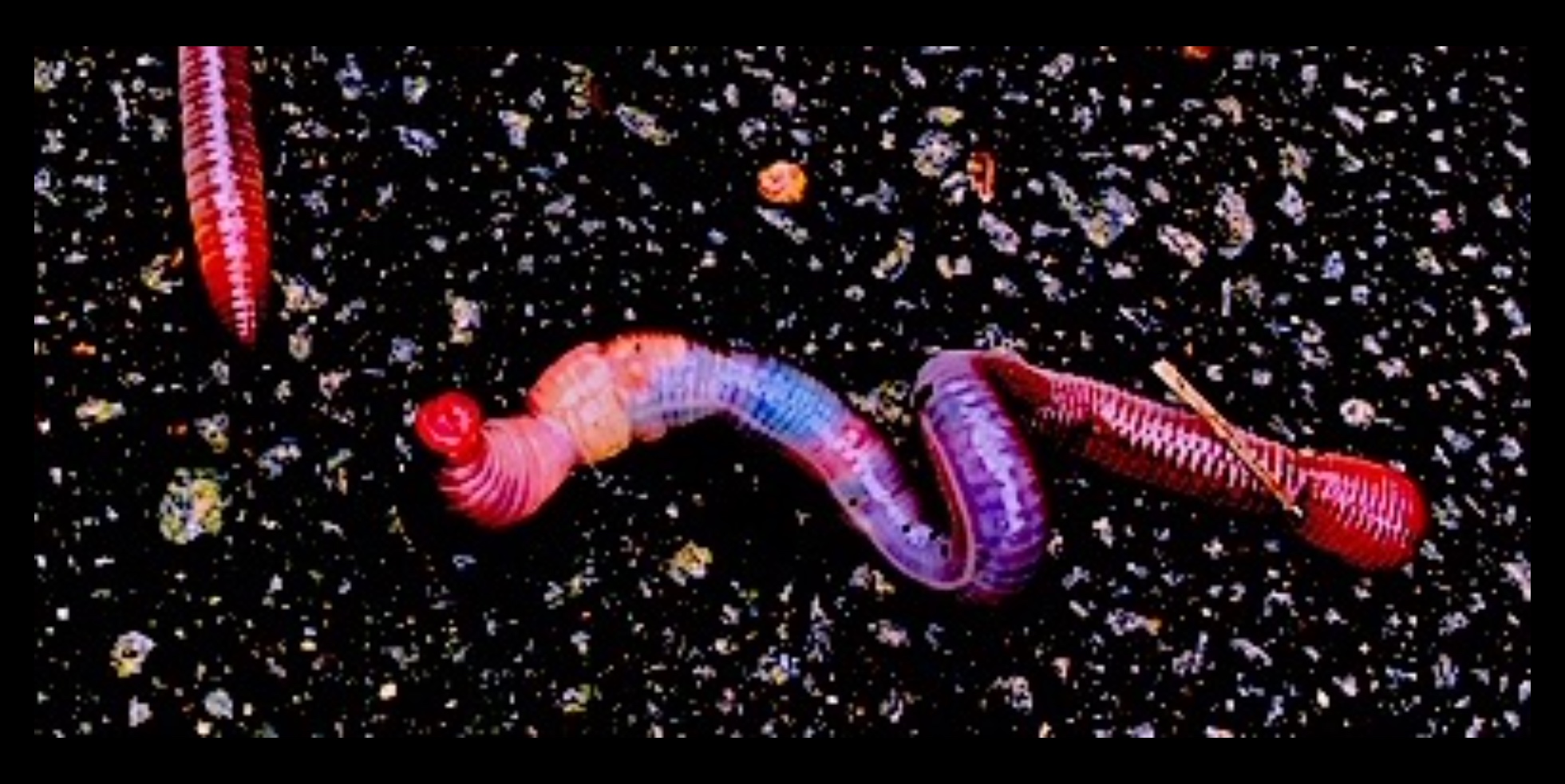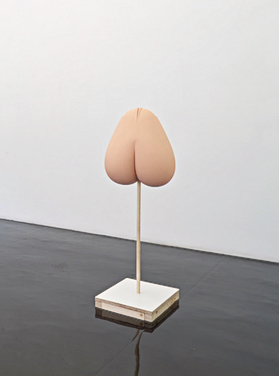Theme: Value and Desire of the Body
The human body is a desired object, and health, beauty and physical exercise are seen as significant pathways to achieve this desirable body, and to improve life expectancy. The ancient Greeks perfected their ideal athletic physique, and displayed strong sporting prowess. Other cultures have revealed other fads and fashions, including body manipulation such as tightly binding female feet to make dainty and small, and overtight female bodice corsets that caused fainting and broken ribcage bones. Standards of beauty have always existed in every culture, with the expectations that the body shape, and dress sense parallels society’s fashion and clothing designs of the day. Yet, bodily self-acceptance and valuing oneself in today’s society is a difficult task. It is made more demanding than ever because of capitalism and consumerism, and the pressure to conform to the likes of social networking and the internet.
The consumer is exposed to the demanding health and beauty market. Through advertisement there is a bombardment to purchase the latest health and wellbeing products, often promoted by iconic movie, pop and sport stars. Youth, sex and beauty is what sells. Therefore, society in the 21st century is far more aware than in previous centuries how to mistreat the body with unhealthy substances, or treat the body well, by eating and drinking in moderation, being active, getting fresh air and exercising healthily.
People feel a desire, or a need, or an expectation to mould their bodies into an ideal, a sculptural form of beauty. Physical change is occurring through chemical, medical and biological means, and through daily use of physical exercise, or extreme sport such as body building, diet, vitamins, pills, makeup and beauty cream products. Reshaping the undesired body parts with cosmetic surgery, and changing one’s appearance by preening and taming their features (skin, hair, wrinkles, teeth), plus making tattoo and piercing marks are all part of standardising. Yet, this is also an individual’s choice, and thus a type of freedom, to control one’s own body and acknowledge one’s identity.
ARTWORK REFLECTION 1.
‘Blue River’ Intermedia: Video, Sculpture, Performance stills, Photography. (See Spatial Sketch 12 post.)
A key concept of my artwork ‘Blue River’ above is about valuing, and loving both the self (body and mind) and others. Caring for one’s own body internally and externally, strengthens and values one’s identity. Valuing the self supports the loving of others. Learning to embrace the external body shape, and acknowledging that no-one is perfect, is part of accepting one’s self. Both inner and outer bodily confidence and self-acceptance can be difficult, if constant criticism over time has occurred in over-competitive situations. Therefore, this video artwork is my reality, and is connected to the Verisimilitude: Real Sculpture brief, because it shares my sculptural and performative realities through the medium of photography. It is also connected to the real sculpture brief, because it is my creative journey, a self-portrait statement, and thus my truth. I have created this reality to improve my love and belief in myself.
Another concept in the video revolves around carnal love and sensuous desire. The tangible existence of bodily forms is represented by virile snake-like creatures, Earthworms, and the human body in loving positions. Another symbol where fleshly desire takes place is the physical bed itself, which is repeatedly displayed in the video as broken materials and ripped shreds. Fabric parts cut from the bed are pierced back together in a reconstructed Pop art inspired sculpture of lovers titled: ‘Popping Purple’.
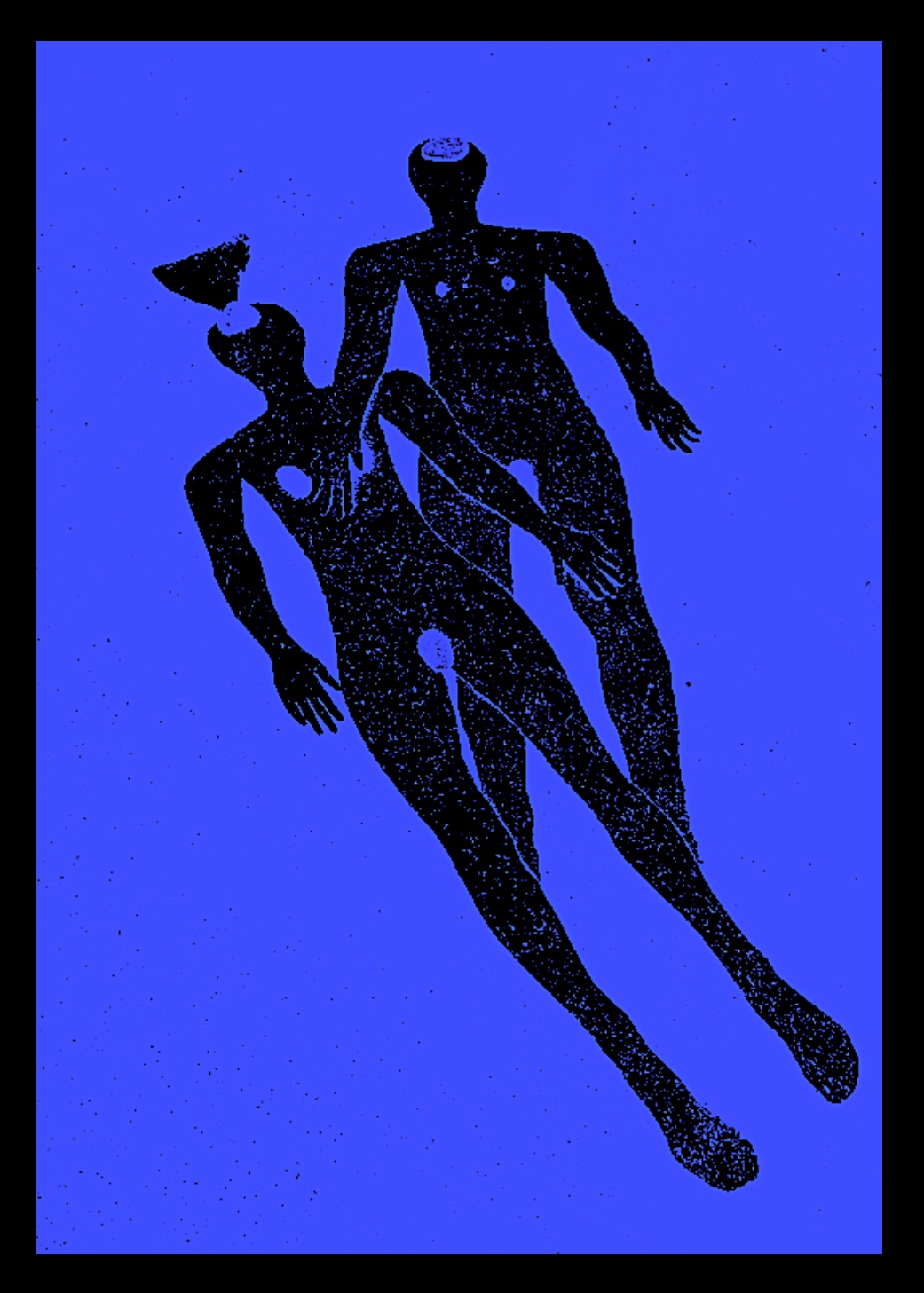
The overall colour scheme of the video images are shaded in the introspective colour of blue. This signifies compassion, caring, depth, trust, loyalty, sincerity and peaceful rest (relating symbolically to the bed and to the value of love). The title: ‘Blue River’ symbolises an artistic journey of reconstruction of a personal item (a disused bed), and my personal courage to bare myself, and my physical flaws in a naked form, in order to extend my confidence in my own body, thus self. The theatrically lit images representing love, are like a moonlit blue river on a winding, pathway journey to the open sea. The title also connects to the colour blue, because Earth is a blue planet full of water, with blue also symbolising wide open spaces of the sea and sky, thus freedom, imagination, sensitivity, insight and spiritual realization. In an art historical context, blue has both positive (the blue painted robes of the Virgin Mary and blue-stained glass in church windows) and negative (the melancholic paintings of Picasso’s Blue Period) connotations. A row of five blue nudes in my video connect back to Henri Matisse’s four paper cut outs and lithograph series titled ‘Blue Nudes’. The Earthworm bodies in the video contrast a fiery red colouring with the serene blue nudes, promoting an anthropomorphic symbolism of passionate desire, love, longing and vigour.
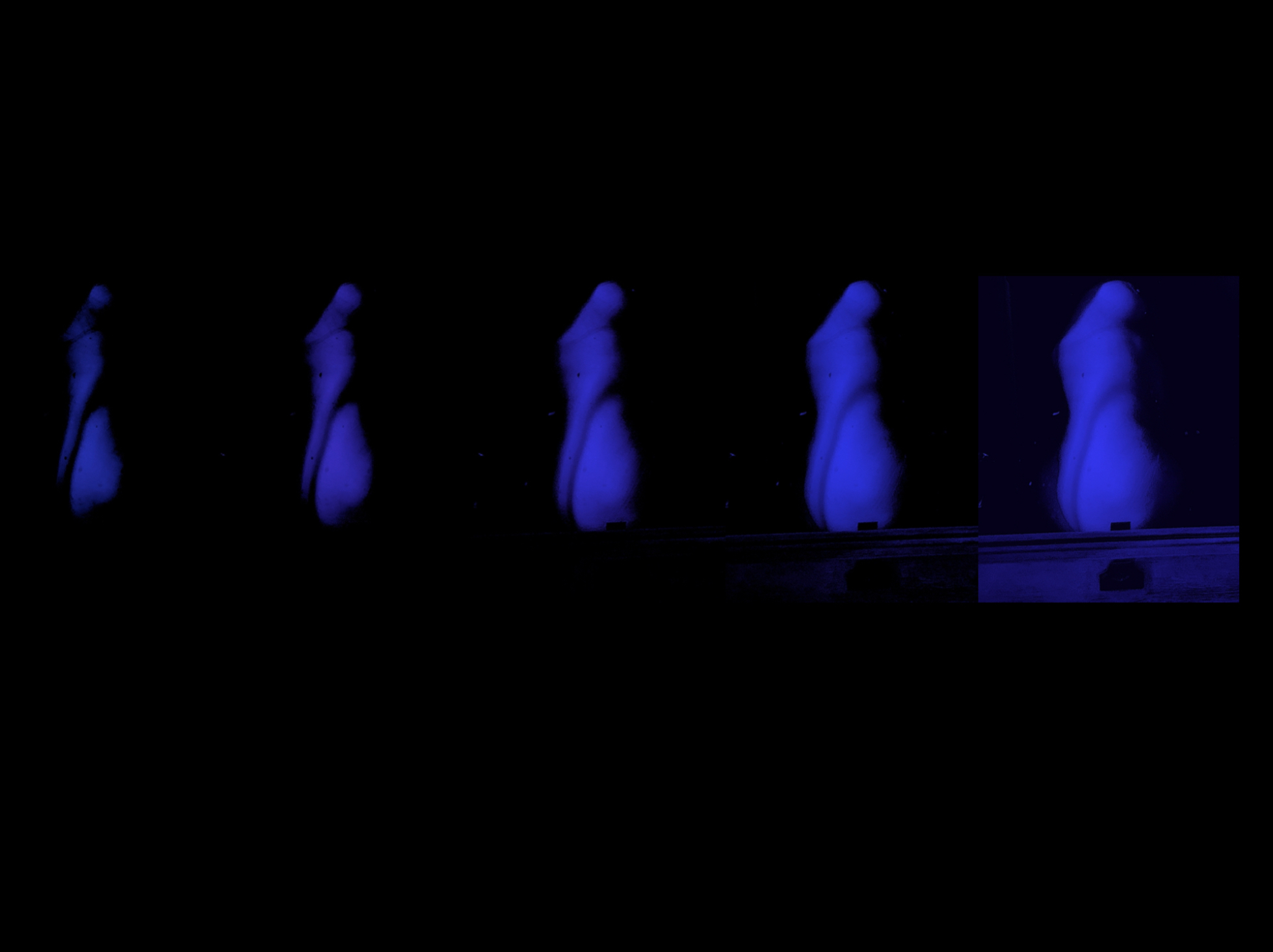
Dutch Artist Johannes Hendrikus Moesman in 1932 created an oil painting titled: “Afternoon (Namiddag)”, now showing in the Museum Boijmans Van Beuningen’s Surrealist collection at Te Papa. Many Surrealist artworks display an erotic and subversive nature, and Moesman’s painting was regarded scandalous in the 1930s, a time of great social change between WW1 and WW2.
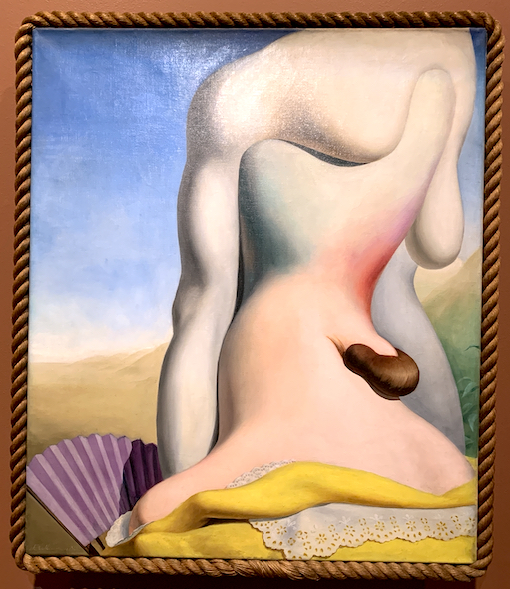
When I made a visit to the exhibition, I was struck by the large scale, and the painting’s extreme beauty of a single headless figure, or this is what I first perceived. Then after closer inspection it revealed two figures entwined in unison. There is a strange beauty, that is juxtaposed against a type of confusing ugliness. It relates to my five blue headless nudes, because my works contain this strange weird ugliness. I physically distorted my own body as I photographed it, to try and access a different emotional state. This I achieved in my 5 blue nudes by contrasting an upright stance in a small windowed room, with a malformed twisted body that turns away from the viewer, as if shy. Moesman’s figure(s) sit upright in a open landscape, not standing, but open and twisting together. Both are headless bodies that curve and twist with tonal perspective.
The Surrealists chose textured materials to evoke a physical sensuality in their artworks, through the sense of touch. The unusual border of a real 3D rope frame contrasts with the seductive fleshy pinky, creamy tones that show a 3D depth, yet sit on a flat 2D painting surface. The curvilinear outline of the figure(s) and the deep tonal quality of soft colours creates this beautiful 3D perspective. This makes me think of the rounded form of sculpture, and I am particularly attracted to tonal paint qualities and sculptural forms.
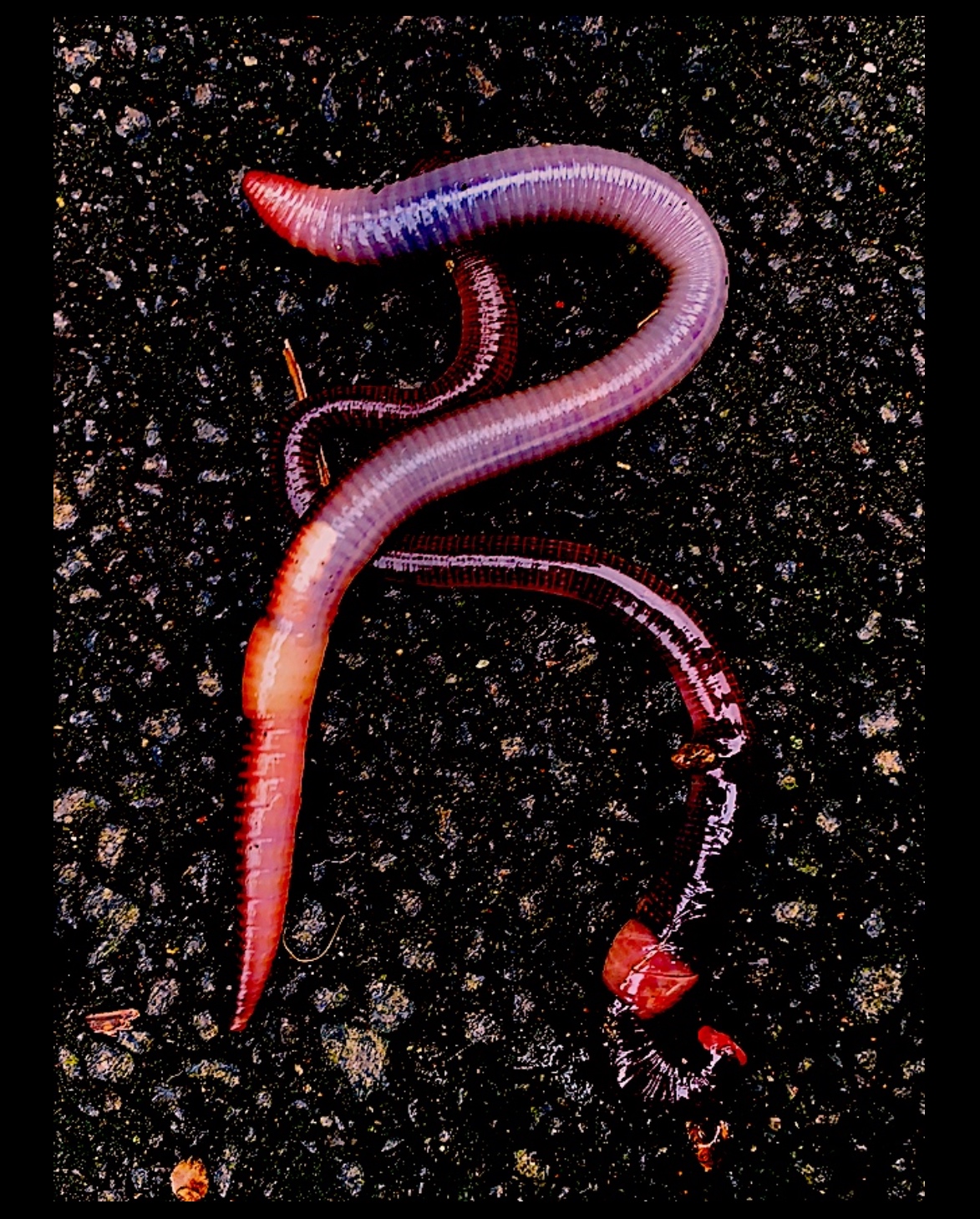
Through photography and video methods, I am acknowledging and expressing my identity through both fragmented body sculptures and whole body sculptures. The fragmented bodies such as the five ‘Blue Bodies’ (showing a range in size to represent society’s pressure for weight loss) have lost their identities, through losing both their body weight and their body parts. This was my reality as a dancer, constantly having high expectations to match the perfect body weight and size. There is a desire for a bond of love between the body and mind. Yet, the body deformities reveal the fragility of the physical instrument of both bodies, human and Earthworm. An Earthworm reveals an injury with a protrusion. As an artist, I am expressing a desire to accept my inabilities, by making an offering of repetitive and reflective damaged bodies, a torso with no limbs, and a torso with no shoulders, neck and head. I am also recalling memories of physical injuries as a professional ballet dancer.
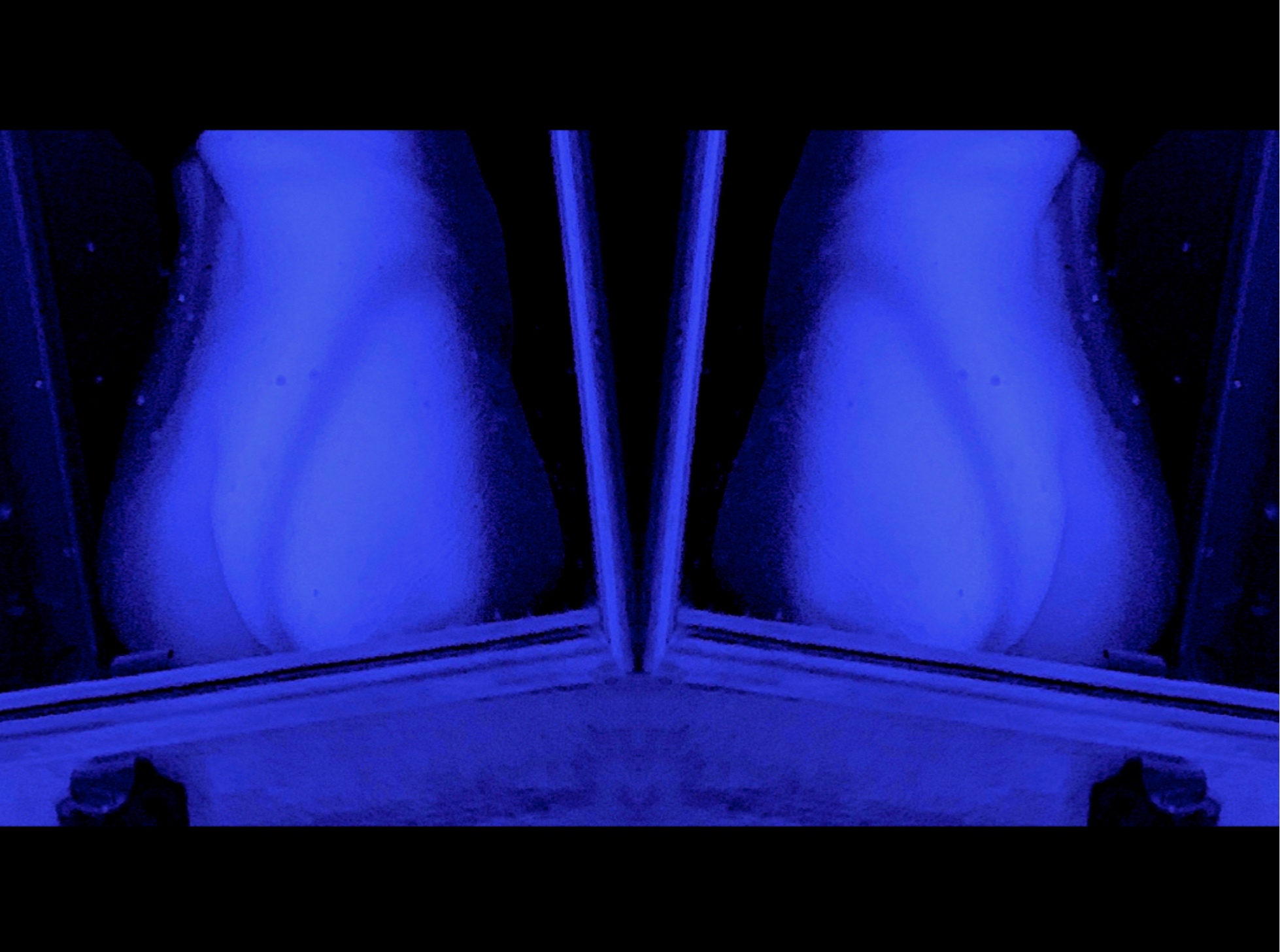
Artist Link: My above artwork titled: ‘Blue Duet’ makes connections to the pear shape derrière photograph, and sculpture (below) by contemporary artist Don Finsel. I have already spoken about his creative work at the beginning of this brief (see earlier posts). Here I utilised photography… and realised what a task!!! Quite tricky to photograph your own back, and buttocks! I am not exactly a contortionist! I have achieved a voyeuristic effect, a view through the window, even though in reality, perhaps this is not a window. I like the curving shadow from the side window light, and I have shown repetition by doubling the image. In comparison, Finsel photographed his sculpture (made of modern materials) and created a feeling of floating with his female abstract bottom that reminds me of a pear. Finsel utilises fruit, such as the pineapple, in his work. The deformed female bottom is brightly lit, and just hangs in a dark space (see left below) with no torso or limbs attached. His actual pear-shaped female derrière sculpture sits on a thin rod (thus symbolic) like a weird monument or pedestal, and again shows isolation from a real female body. All three images question what is real, and what is fantasy? My topless buttocks above are pear shape after all (I never knew, as I could never quite easily see their shape, thus reality). I definitely feel that my derrière is not as beautiful as a golden pear, and… definitely not as fruity!
This specific bed in the video was a place of rest, peace and desire. By deconstructing a useful, yet disused object is to discover the inner workings within the body of the bed. This also provided an opportunity to restore and rejuvenate, by using its parts to remake as new sculptural objects.
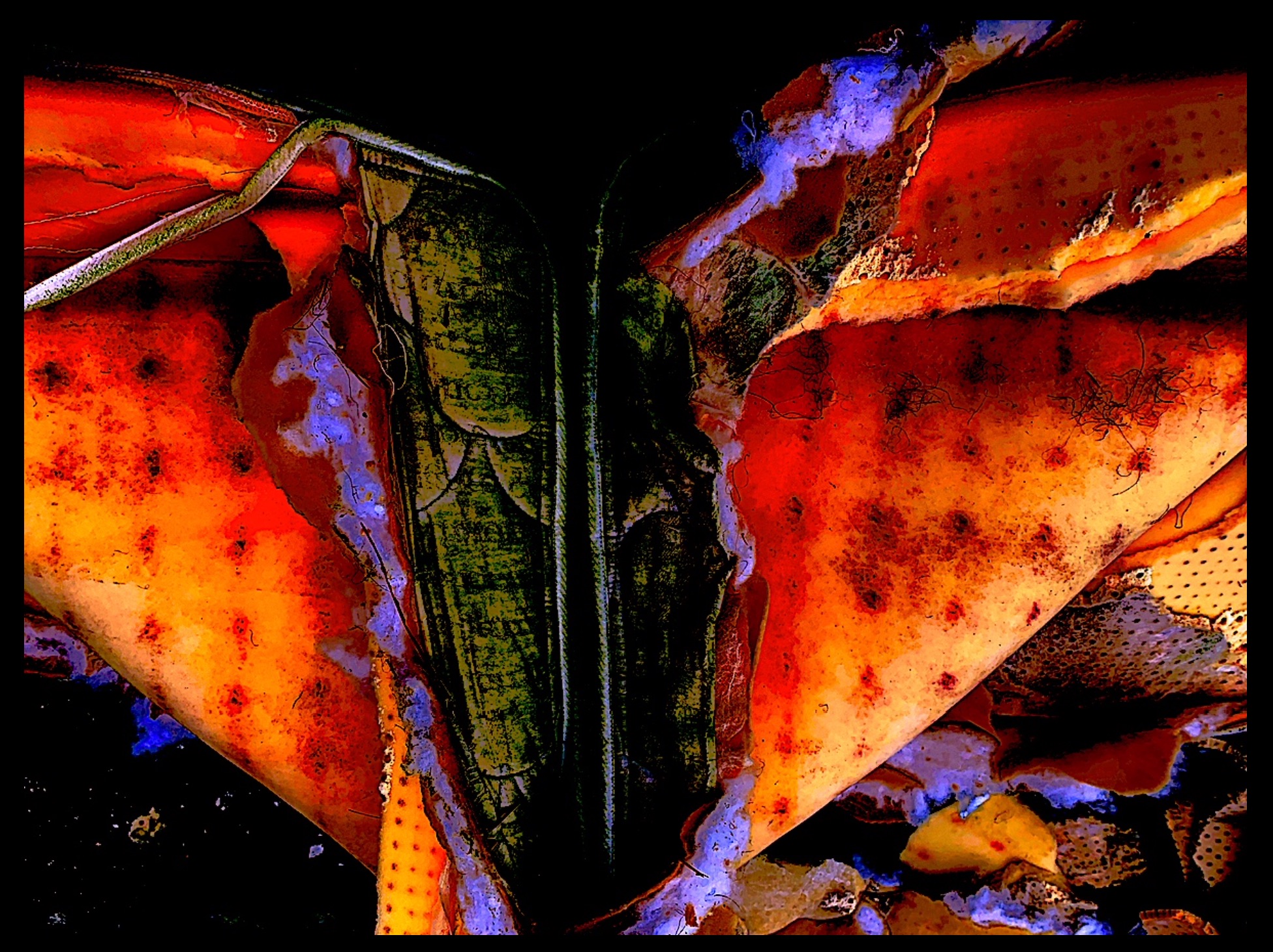
The observation of the Earthworms was an accidental phenomenon, a chance encounter. The immersive experience of photographing nature partaking in a natural activity was an encounter that made me stop and think about the world. It stimulated my creativity to create a video about the deconstruction of the materials of the bed, and to include Nature, and thus was integral to improving my sense of self. By integrating myself with the natural world I was building a phenomenological relationship with nature and developing new learning. I am happy around Nature, thus it is significant in constructing my sense of wellbeing, my values and my reality.
